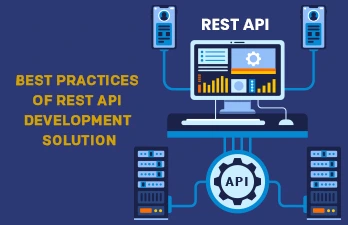This kind of confusion arises when we are looking forward to our next project and of course torn between the decision of which platform to use. Web developers are mostly acquainted with this kind of question as they are well updated with different frameworks and libraries. This gives them the opportunity to code everything from simple to complicated functionalities. Since primordial times web development has evinced various improvements. If you want a normal website, then it can be created with Wix. However, if you want a professional website meant for your business, a specific framework is needed to build a business website.
In this blog, we will focus on the distinct aspects of the Gatsby.Js and Next.Js and make a proper distinction between them. If you are looking forward to building a sophisticated website, one that tackles user data and custom-built content, you must be familiar with frameworks like CMS like WordPress. As speed becomes a factor in websites along with responsiveness, advanced technologies like Gatsby.js, Next.js, and many others can be used.
Gatsby.js and Next.js are considered at the forefront of the technologies. Many developers have debated online about the distinctly preferred frameworks. Gatsby.Js is considered as building static websites where the content remains the same. There have been recent developments in both the Gatsby.Js and Next.Js development.
Introduction to Gatsby.js
Gatsby.Js helps to combine the different parts GraphQL, React, as well as react-router that administers you with a static website generator that is quite developer-friendly. Gatsby creates static HTML files that are capable of loading directly from a CDN. Gatsby.Js is utilized to build a website that generates static HTML using CDN for faster accessibility.
Gatsby.js is delineated as a modern front-end framework that administers excellent fast-page loads using a complete bunch of features comprising like server-side rendering, asset optimization, code splitting, data pre-fetching, and many more.
Introduction to Next.js
Next.js is considered a tool for building server-side rendered websites that helps in generating the HTML dynamically every time when a new request comes to it through a server. Next.Js is perfect for creating dynamic websites. The websites are rendered through the server-side. Next.Js is focused on creating websites that have strong interaction with the server utilizing features such as Single file components, hot code reloading, and automatic code-splitting, for assisting you in creating wonderful React websites.
Definite similarities between Next.js. And Gatsby.js.

Creating strong websites
Next and Gatsby frameworks are utilized for building high-performance websites. The high performance of websites is considered through good lighthouse scores. The websites created with these frameworks are SEO-friendly and responsive delivering pre-rendered HTML.
Developer experience
The Next.Js and Gatsby.Js are created with extensive documentation. This, in turn, helps to feature over the existing app platforms. One does not require to learn all from scratch. A fundamental understanding of React is the only required need for both frameworks.
Excellent features & characteristics
Hot reloading is a great feature that is inbuilt in both Next.Js and Gatsby.Js. Different other features comprise routing, prefetching, caching, and code splitting.
The benefits of gatsby.js in building large websites
Are you on the lookout for creating a multi-user website? Next.Js is the ideal choice for building such websites. The websites have multiple users joining at the same time. Therefore when it comes to building multi-user sites with Gatsby.Js during runtime it becomes difficult to create a static website, making Next.Js the preferred platform for the sites.
These types of websites need to be created with unique and dynamic content and logged in users. The server-side rendering will assist in catering to distinct users based on authentication. Every user can see their content as they create it on the website. Gatsby.Js is therefore ideal for building static websites and web pages that are easier to build. Contrarily Next.Js is used for creating multiple user websites.
Gatsby.Js the static website platform
A static website is created with a series of separate HTML pages. The users visiting a static website can view the same content. On this kind of website, updates are not available in real-time making it a better choice for personal blogging purposes.
In a static website, as the number of pages can be settled and remains predictable, the content does not change. Gatsby.Js is ideal for creating such websites providing support from a varied range of REST APIs, CMS systems, GraphQL and databases.
The main comparison between Next and Gatsby lies in the way they deal with data. Gatsby separates the website and data which will give the flexibility to others for editing data on the web page apart from developers. This can be compiled on-page as the site during runtime. Gatsby makes it easier to create status websites supporting updates of data without any programming knowledge.
How next.js is catching on the static website trend
The release of the Next.js 9.3 completely supports static site generation by fetching new data techniques. Users can effectively use getStaticpaths and getStaticProps for building static websites as they would using Gatsby. The two tools help to generate a set of ids that the static site supports and fetches data generated depending on the ids.
By using this information Next.js will generate a page for various blog post ids, passing the data fetched from external services. For instance, Ticketmaster.com is one such ecommerce website that is created using Next.Js platform. It perfectly amalgamates both server-side rendering and static site generation. Next.js can be utilized for building the perfect ecommerce website. Some portions of the website can be made static such as your contact page and shipping information. One can use the server for rendering pages comprising dynamic contents.
Creating hybrid web apps: Gatsby Vs. Next
Do you want to build a hybrid web app for your business? Then it is required to render the page user interface through SSR and tackle data to the CSR. In this case, Next.Js is the best platform that can be used to build hybrid web apps.
As a single web application, you have both the CSR for users and SSR for visitors who are logged in. This kind of app can be built with Next.Js. Most of the pages are optimized for search engines and the content remains dynamic on the web pages.
Drawbacks of next.Js

In the complete article, we have given an illustration of the difference between Gatsby Js and Next.Js. Apart from acknowledging that Next.Js supports both dynamic and status websites, there are certain nooks that you should consider while choosing Next.
Infrastructure
If you have selected Next.Js then you need to end up investing in setting up servers with databases and maintenance. On the other hand with Gatsby.Js, one can pre-render them on build and utilize a CDN for creating superfast and powerful websites.
Security of data
When it comes to data security Next can be underestimated as with APIs and CMS having private features data remains present in the server, leaving ample opportunity for exploitation. On the other hand, Gatsby supports the required data taken from the source and places it securely.
Images
Gatsby images are Gatsby plugins that help in resizing images at build time. This offers a better customer experience as small screen devices like smartphones do not have to download bigger size images meant for desktops. Therefore it offers more responsiveness to the site implying a greater speed of the web. This feature is not available in Next.Js.
Conclusion
There are many top websites created with both platforms. For instance, Next.Js is used to build Tik tok, Hulu, Netflix job sites, and Invision. Similarly, Gatsby.Js is used in Nike, Figma, Airbnb engineering and many more. Are you looking forward to your next project? Then you need to give a thought to the frameworks, Gatsby.Js and Next.Js. Nextbrain is the top web app development company in India that delivers high-end web solutions to clients all across the globe. The company comprises experienced professionals and developers who have many years of expertise in creating effective web app platforms for startups, medium scale companies and enterprises. If you have further queries regarding React framework, Gatsby or Next.Js, then you can connect with our experts for resolution.



Saran
April 22, 2022 Author